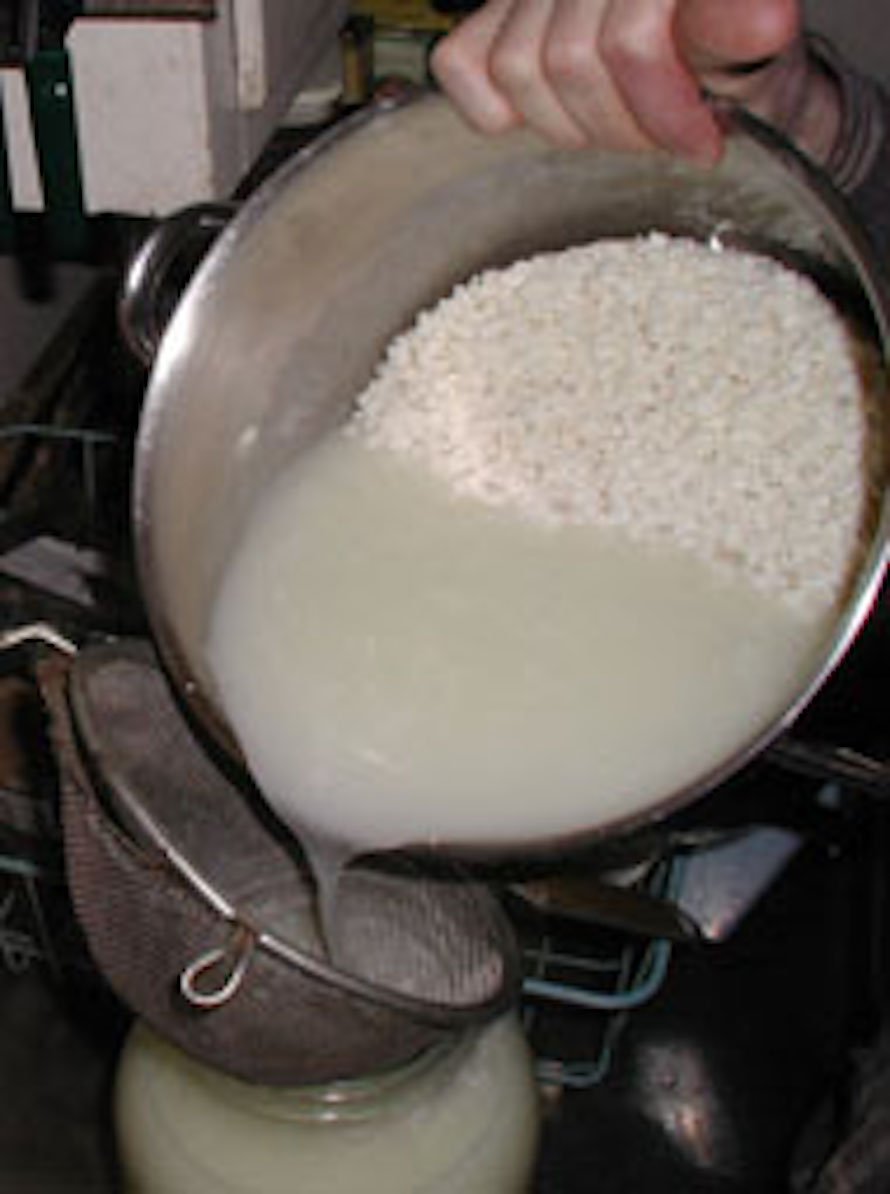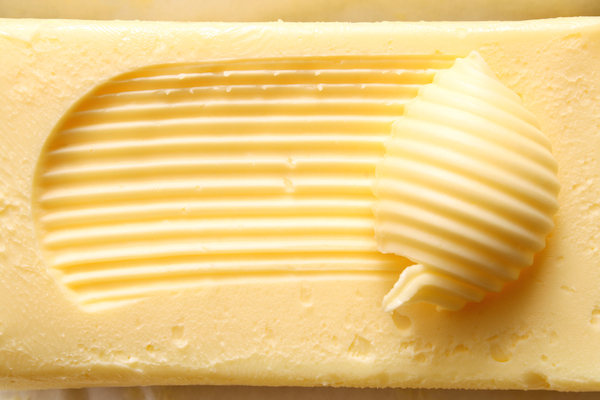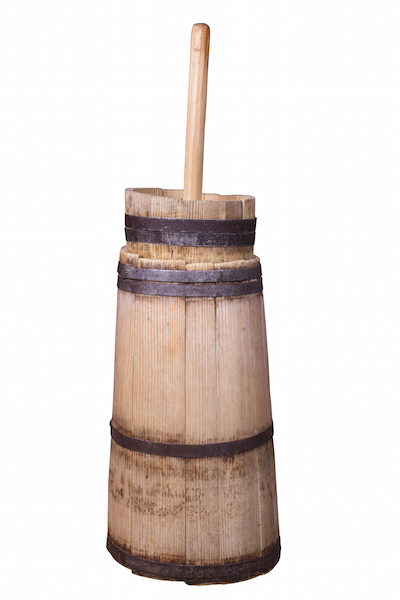Cheese and butter are made from milk.
The milk can come from cows.
It can also come from sheep and goats.
There are more than 1000 different kinds of cheeses.
Some cheese is hard, some is soft and some is runny.
The first cheese 2000 years ago!
No one knows for sure just how cheese was first made. According to an old legend, cheese was first made in the Middle East when a man travelled across the desert with his saddlebag full of milk for the journey. After some time he stopped for a drink and found that the milk had soured. It had become solid lumps and watery liquid, or curds and whey.
The most popular kind of cheese is cheddar. It was named after a village called Cheddar in England where it was first made. The cheese was left in the nearby Cheddar Gorge caves to mature.
Making cheese is a four step process
The first step in cheese making is to separate the curds from the whey. Getty Images
The curds are the solid part of milk, and consist of protein, fat, water and a small amount of sugar and milk. The whey is the liquid that separates from the solid. It contains sugar.
To make cheese the curds must be separated from the whey. This first step is called curdling.
Cheddar is made by heating the curds so they lose moisture, or whey, then pressing them so that even more moisture is lost. The last of the whey is then drained off. This second step is called draining.
First the curd is cut into large blocks which are stacked on racks, then rotated so that different ones are on top. This is called 'cheddaring'.
The next stage is to mill the curds into small pieces and add salt. The curd is then put into big hoops lined with cheesecloth and pressed. This is the third step and is called pressing.
After this the cheese is left to mature, kept at 12º C. Every few weeks the cheeses are turned and brushed so that they mature evenly. The longer it is stored, the more flavour a cheese develops. Tasty cheddar is usually stored for 4-8 months. This is the fourth and final step and is called ripening.
As cheese ripens it is inspected and turned. ©Getty Images
Modern methods of cheesemaking have made the cheese flavours more standard. Instead of using cheesecloth, large blocks of cheddar are pressed into blocks which are then vacuum-packed. This doesn't allow the cheese to breathe and form a rind like the traditional method, but it does make it cheaper to make cheese.
Watch a video showing how cheese is made
Why cheese is good to eat
Cheese is packed with the protein that we all need to grow. Hard cheese is source of calcium a mineral that is good for our bones and teeth. Cheese is a source of vitamin B12, which we need for red blood cells to form.
A small selection of cheeses. ©Getty Images
Some cheesy facts
Cows take about 60 hours to turn grass into milk.
10 litres of milk are needed to make 1 kg of cheese.
The average Australian eats over 9kg of cheese a year!
It’s a good idea to find information from more than one source!
Read more information about cheese and see the names of over 900 different cheeses
Watch a video about the history of cheese making from its earliest times
This cheese is made from goat's milk.There are also cheeses made from sheep's milk. ©Getty Images
Butter
Butter has been made for centuries. It is not known which peoples were the first to make it, but we do know that the Vikings were known as 'butter eaters'. The first recorded makers of butter were Syrians and Arabs.
When fresh whole milk is left to stand, a thick, yellowish part of it floats to the surface. This is the cream. Butter is formed when cream is churned, or agitated. It begins to form lumps, which gradually join together and form a lump of butter. A little salt can be added. The colour of butter depends on what the cow has been eating, but it is naturally a pale yellow. Manufacturers of butter nowadays add food colouring.
An upright churn: the paddle was moved up and down to agitate the cream. ©Getty
There was different equipment for churning the butter. In ancient times the cream was put into a leather pouch which was then swung about until the butter formed. Later there were wooden churns of different shapes, including a barrel shape that was rotated by turning a handle. Butter making was generally done by women.
Until the end of the 18th century in Scotland, Ireland and Iceland, butter was stored in wooden barrels, called firkins, which were buried in a peat bog. This gave the butter a fuller flavour.
When butter is gently warmed it will separate. The fat floats to the top and the milk solids sink to the bottom. The purified fat is removed from the solids and is called clarified butter or ghee. Ghee is used often in Indian cooking.
Clarified butter, or ghee. ©Getty
Some buttery facts
The earliest butters were made from the milk of yaks, goats and sheep and even camels, not cows.
In ancient times butter was so precious that the Vikings buried tubs of it to take with them into the afterlife.
The textures of cakes are different depending on how butter is combined with flour and sugar - when you cream butter and sugar you’re putting air into the blended ingredients, forming tiny gas bubbles in the fat. This gives cake a tender, springy texture.
About 20 litres of milk is needed to produce about 1 kilogram of butter.
It’s a good idea to find information from more than one source!
Read about the science behind making butter, try making your own!
https://gosciencegirls.com/butter-food-science-kids/









